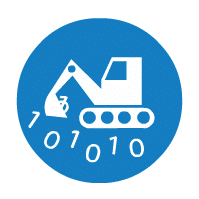Mobility is changing. Numerous companies are entering the market in the hope of being able to participate in the changing purchasing behavior of customers. The challenge here is to differentiate themselves from the competition, to use the individual touchpoints in a consistent manner and to systematically increase the value for customers and their own company. CX for mobility providers can help to achieve these goals. However, there are several pitfalls to be aware of.
In collaboration with CustomersX®, an assessment of the existing customer experience was carried out. It became clear that the company was getting bogged down at the numerous touchpoints. In addition, there was a lack of a customer value analysis on the topic of CX. As a result, the focus was placed on the central value drivers from the customer’s perspective. Differentiation was strengthened and marketing and sales activities were radically focused. This enabled the company to significantly increase growth and profits.
CX Consulting
Work with us to create a CX that differentiates and increases value for you and your customers.
Contents:
- How are customer journey and customer experience connected?
- What are the key success factors for CX for mobility providers?
- How can CX be successfully implemented for mobility providers?
- How can the CX for mobility providers be systematically improved?
How are customer journey and customer experience connected?
Based on our DTC approach , we developed a project approach to use customer experience management as a differentiation and value creation activity.
In a first step, the customer journey was analyzed using qualitative interviews and a quantitative survey and compared with the activities and investments in marketing, sales and service. Companies repeatedly shy away from comprehensively measuring the customer journey. This is also because many providers rely on what we consider to be completely spherical constructs, such as moments of truth or personas. While the concept of Moments of Truth sounds conclusive, our projects show that customers have many moments and usually none of them lead to a purchase decision being abandoned, but that several moments always have to be less than ideal. Persona segmentation always looks great, but has never been used successfully to increase customer value in practice. Why such concepts persist so stubbornly in practice remains a mystery.
The results of our customer journey analyses and the comparison of activities and investments show a clear mismatch. It can always be observed that too many touchpoints are used in an average and inconsistent manner. By adopting a radical focus, we were able to free up internal resources and offer customers a clearly differentiating value-added experience.
The key success factors for CX for mobility providers?
In a second step, a CX strategy was developed. This involved creating an internal roadmap and an external playbook. The internal roadmap showed the company which competencies needed to be improved over the next three years. In particular, the areas of customer data and controlling revealed significant gaps in expertise. In addition, a plan was drawn up for the continuous expansion of automation. The playbook outlined the brand identity, central content, the standardization of touchpoints and the content strategy.
At a glance

20%
Customer Value-based Decision Making

40%
Customer-centric transformation

20%
Co-creation

20%
Customer Management
How can CX be successfully implemented for mobility providers?
How can the CX for mobility providers be systematically improved?
In the final step, it was agreed with the customer that we would carry out an annual CX check. Even if the reservations about such a binding commitment are usually great. It is always underestimated that a transformation can go much better with the help of an external partner, especially in the first two years. However, it is important to keep the effort for the customer as low as possible.
In summary, many CX initiatives fail because they neither increase value for the company nor for customers. This is often due to a lack of expertise within the company and a reliance on idiosyncratic methods and approaches such as the aforementioned Moments of Truth and persona segmentation instead of a solid foundation in financial metrics. Using CX for differentiation and to increase customer value is possible, but in most companies it means an enormous transformation, especially in customer-facing departments. As the customer still has a manageable number of employees, the transformation was much easier to manage. As a result, our client is experiencing significant growth and profit development and has significantly improved its CX competencies.
* We take confidentiality with our customers seriously. The name has been changed, but not the content.




